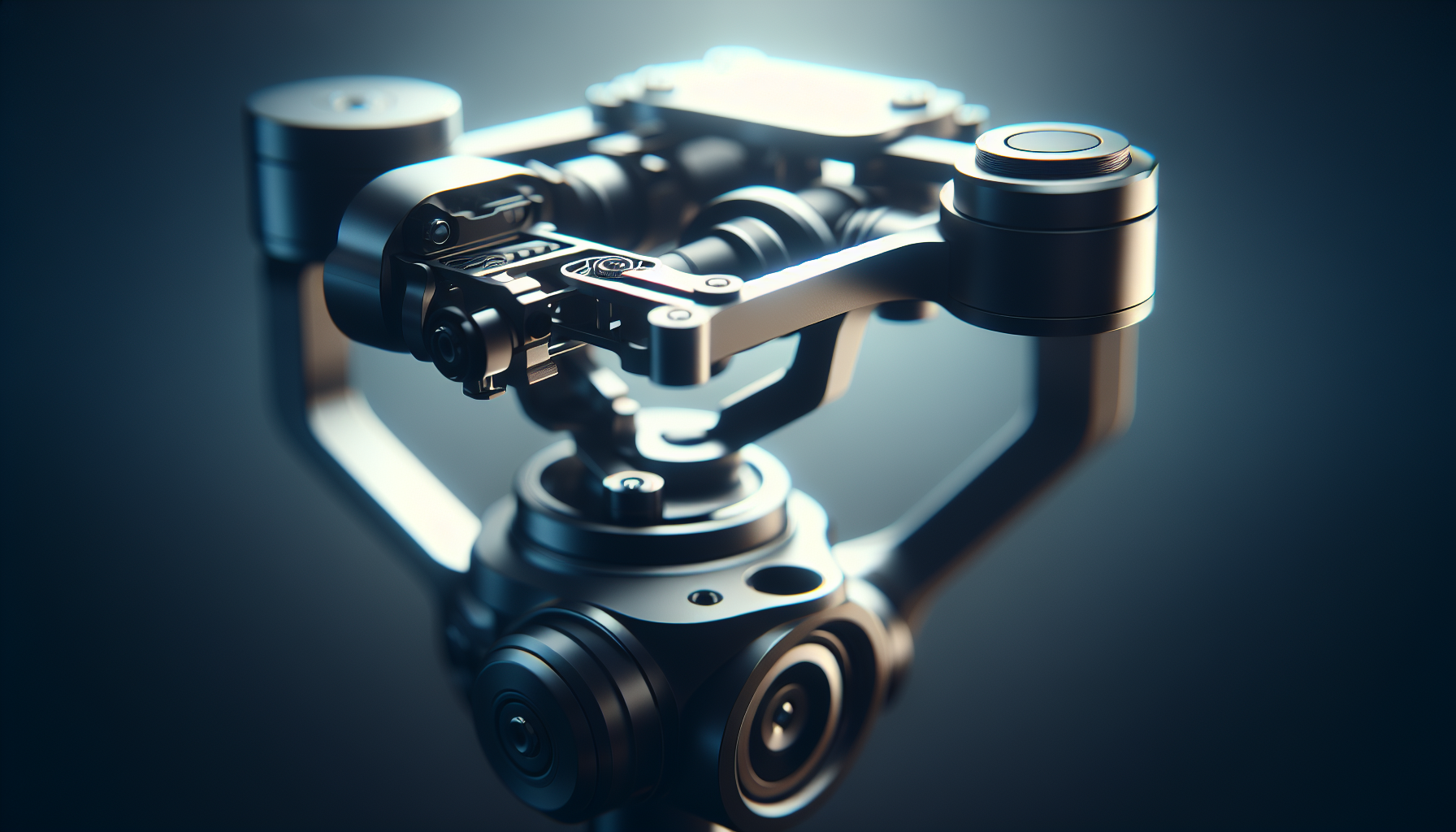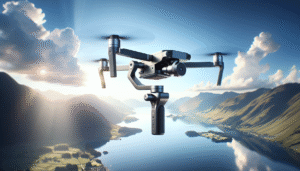Have you ever found yourself frustrated with shaky drone footage that just doesn’t live up to your vision? I can completely relate to that feeling of disappointment when your captured moments fail to match the stunning vistas you had in your mind’s eye. Fret not, for I’ve ventured down the winding path of drone escapades, and I’m here to share the secrets to achieving that perfect footage by balancing your drone gimbal just right.

Understanding the Importance of Gimbal Balancing
Before diving into the nitty-gritty of balancing your drone gimbal, let’s chat about why it’s crucial. Think of your drone gimbal as the trusty stead carrying your precious camera. If poorly saddled, the ride is bumpy and chaotic. Gimbal balancing is key to ensuring your drone’s movements don’t translate into shaky footage. With a well-balanced gimbal, your camera can move smoothly, delivering footage that’s as silky as melted chocolate on a sundae.
The Science of Gimbal Balancing
Essentially, balancing your drone gimbal ensures the camera’s weight is evenly distributed. Without getting too technical, this balance allows the gimbal motors to function with maximum efficiency, reducing strain and extending battery life. A well-balanced gimbal equals less work for the motors, resulting in smoother footage and a healthier drone.
Tools You’ll Need
Balancing a gimbal isn’t rocket science, but having the right tools at hand can make all the difference. So, what exactly do you need? Here’s a little checklist that you might find handy:
| Tool | Purpose |
|---|---|
| Screwdriver | For adjustments on some gimbal models. |
| Allen wrench | Needed for fine-tuning specific gimbal parts. |
| Calibrated weights | For precise balancing – often optional but good for perfectionists. |
| A flat surface | To set up your drone and adjust the gimbal easily. |
Armed with these tools, you’re prepared to embark on your gimbal-balancing adventure.

Step-by-Step Guide to Balancing Your Drone Gimbal
Step 1: Set Up on a Flat Surface
This might seem obvious, but you’d be surprised how much easier it gets when you start with a stable base. A flat surface ensures that you’re not wrestling with external factors like an unsteady ground or a wonky surface. So, grab a table or countertop, park your drone there, and marvel at the stable stage you’ve set for this balancing act.
Step 2: Remove the Camera
Initially removing the camera might seem counterintuitive, but trust me, it’ll make balancing way easier. By detaching the camera, you can focus solely on the gimbal mechanics without worrying about the camera’s additional weight causing shifts or distractions.
Step 3: Align the Gimbal with the Drone
Next, you need to ensure the gimbal is centered on the drone body. Misalignment can often lead to unintentional tilts. Align your gimbal as straight as an arrow with the drone’s central axis. Imagine squaring off your shoulders as you dive into a swimming pool – alignment makes for a smoother dive.
Step 4: Reattach and Balance the Camera
Okay, bring back the camera. Reattaching it is like returning the final puzzle piece to its rightful place. Once attached, make sure it sits snug and tight within the gimbal’s grip. A loose camera is an unhappy camera, bound to create chaos in flight.
Step 5: Test the Tilts
Now for some tilting action. Gently tilt the drone forward and backward, observing how the gimbal behaves. Ideally, you want the gimbal to return to its original position without excessive sway or rebellion. Misbehavior here indicates a balancing problem.
Step 6: Side-to-Side Motion
Tilt the drone from side to side (right and left). The gimbal should hold steady like a disciplined yogi holding tree pose. If you notice tip-offs or sways, you might need to adjust accordingly.
Step 7: Fine-Tuning with Weights (Optional)
If you’re still facing imbalance issues despite tweaking, consider introducing calibrated weights. These are like the little helpers that ensure equilibrium. However, proceed with caution and only make small adjustments. Think of it as seasoning a stew – less is often more.
Common Balancing Mistakes and How to Avoid Them
Overlooking Axis Alignment
Many rookie errors stem from an overlooking of axis alignment. Some folks skip ensuring the camera sits perfectly in line with the drone’s axis. If you’re experiencing persistent movement troubles, start by double-checking alignment – it’s often the culprit whispering chaos into your footage.
Ignoring Wear and Tear
Drones, like us, age and accumulate character over time. Little wear and tear nuances can affect balance. Regularly inspect your gimbal and drone body for signs of breakage or loose screws. Sometimes, a simple tightening is all it takes to reinstate balance.
Rushed Calibration
I get it – in the excitement of capturing that glorious sunset, the urge to rush is almost irresistible. But patience is your best ally here. Take your time to calibrate properly. Speed can be your detriment, causing easily avoidable errors.
Regular Maintenance Tips for a Perfectly Balanced Gimbal
Maintaining balance isn’t a one-time show. Think of it as regular hygiene for your drone. Here are some tips to keep things neat and tidy:
Regular Cleaning
Dirt and dust are like the sugar ants of the drone world – pesky and uninvited. Keep cleaning utensils like microfiber cloths handy to ensure your gimbal remains spotless and efficient.
Timely Firmware Updates
Drone manufacturers often roll out firmware updates like seasonal fashion lines. Keeping your drone firmware up-to-date can fix bugs, improve balance algorithms, and enhance your overall flying experience.
Frequent Inspections
Dedicate some time to check on screws, mounting points, and the gimbal’s general health. Regular check-ups can spot potential problems before they manifest as disastrous mid-air shakes.
Final Thoughts on Achieving Perfect Footage
Balancing your drone gimbal is like setting the stage before a grand performance. Everything’s in its place, awaiting your maestro-like command to orchestrate cinematic magic. With patience, the right tools, and a sprinkle of practice, you’ll transform those shaky snippets into breathtakingly smooth footage that captures the world in all its spectacular glory. So, give your drone gimbal the tuning it deserves – it’s time to let that camera roll!
![Best Gimbal For DJI Mini 4 Pro In 2025 [Top Picks + Quick Deals]](https://droneaperture.com/wp-content/uploads/2025/06/best-gimbal-for-dji-mini-4-pro-in-2025-top-picks-quick-deals-1-300x171.png)
![Top 5 Drone Gimbals For Cinematic Footage Under $500 [2025 Tested]](https://droneaperture.com/wp-content/uploads/2025/06/top-5-drone-gimbals-for-cinematic-footage-under-500-2025-tested-300x171.png)
